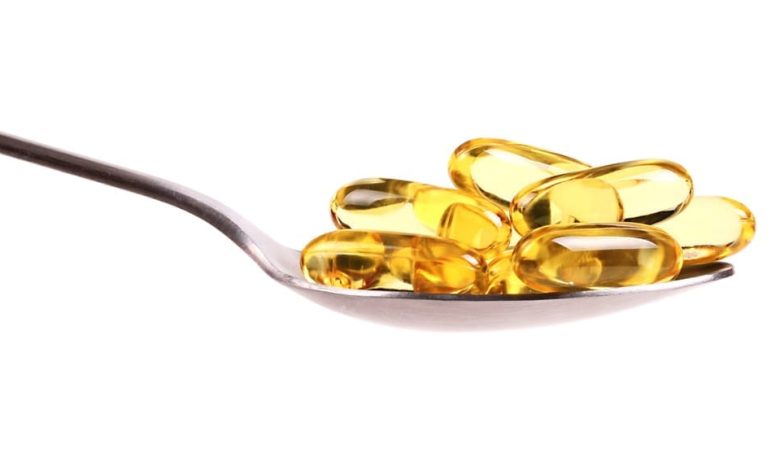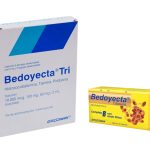Mixed Tocopherols: Uses, Benefits, How to Use, Side Effects, Sources

What does mixed tocopherols mean?
Mixed tocopherols refer to a combination of different forms of vitamin E compounds that are commonly used as natural preservatives in various food products and supplements. Vitamin E is a fat-soluble vitamin and an antioxidant that helps protect cells from damage caused by free radicals. The term “tocopherols” specifically refers to a class of compounds that have vitamin E activity.
The main forms of tocopherols found in mixed tocopherols are alpha-tocopherol, beta-tocopherol, gamma-tocopherol, and delta-tocopherol. Each form of tocopherol has unique antioxidant properties, and together they can provide a more comprehensive protection against oxidation and spoilage in food products that contain fats and oils.
Using mixed tocopherols as a natural preservative is a popular alternative to synthetic antioxidants like butylated hydroxytoluene (BHT) and butylated hydroxyanisole (BHA), which some consumers may prefer to avoid due to potential health concerns. Mixed tocopherols are considered safe and are commonly added to foods, such as cereals, snacks, and cooking oils, to extend their shelf life and maintain their quality. Additionally, mixed tocopherols are often used in pet foods, cosmetics, and personal care products for their preservative and antioxidant properties.
What is mixed tocopherols good for?
Mixed tocopherols, being a combination of different forms of vitamin E compounds, have several beneficial properties and applications:
1. Antioxidant Protection: The primary role of mixed tocopherols is their antioxidant activity. They help neutralize free radicals, which are unstable molecules that can cause cellular damage and contribute to oxidative stress. By reducing oxidative stress, mixed tocopherols may help protect cells and tissues from damage and support overall health.
2. Food Preservation: Mixed tocopherols are commonly used as natural preservatives in food products that contain fats and oils. They help prevent oxidation and spoilage, extending the shelf life of these products. This makes them a preferred choice over synthetic preservatives like BHT and BHA for those looking for more natural alternatives in their food.
3. Skin Health: Vitamin E, including mixed tocopherols, is known for its potential benefits to the skin. When applied topically in skincare products, it may help moisturize the skin, reduce inflammation, and protect against UV damage. Vitamin E is often used in various lotions, creams, and oils to promote healthy-looking skin.
4. Cardiovascular Health: Some research suggests that vitamin E, especially gamma-tocopherol, may have a positive impact on cardiovascular health. It may help reduce oxidative stress in blood vessels and contribute to maintaining healthy blood circulation.
5. Immune System Support: Vitamin E is believed to play a role in supporting the immune system. It may enhance the activity of certain immune cells, helping the body defend against infections and illnesses.
6. Eye Health: Vitamin E, particularly alpha-tocopherol, has been associated with supporting eye health. It may help protect the eyes from oxidative damage, potentially reducing the risk of age-related macular degeneration and cataracts.
It’s important to note that while mixed tocopherols have numerous potential benefits, individual responses to vitamin E supplementation may vary. As with any supplement or health product, it’s best to consult with a healthcare professional before taking mixed tocopherols or any other dietary supplements, especially if you have specific health concerns or are taking medications. Natural sources of vitamin E can be found in various foods, including nuts, seeds, vegetable oils, and leafy greens.
Can I put mixed tocopherols in food?
Yes, you can put mixed tocopherols in food. In fact, mixed tocopherols are commonly used as a natural preservative in various food products that contain fats and oils. They are added to prevent oxidation and rancidity, thereby extending the shelf life of the food.
When you purchase products like cereals, snacks, cooking oils, or other foods that contain fats, you might find mixed tocopherols listed as an ingredient on the label. These mixed tocopherols are typically derived from vegetable oils and serve as a safe and effective alternative to synthetic antioxidants like BHT and BHA.
While mixed tocopherols are used as a food preservative, they do not significantly affect the taste or flavor of the food. They are generally considered safe for consumption and are classified as Generally Recognized as Safe (GRAS) by the U.S. Food and Drug Administration (FDA).
If you are interested in adding mixed tocopherols to your homemade food preparations, you can find liquid or powdered forms of mixed tocopherols available for purchase. However, since they are primarily used as a preservative, there might not be any significant nutritional or taste benefits to adding them directly to your recipes. If you have specific dietary concerns or are considering supplementation, it’s advisable to consult with a healthcare professional to determine if mixed tocopherols are appropriate for your needs.
Side Effects
Mixed tocopherols, when used in recommended amounts as a food additive or as part of dietary supplements, are generally considered safe for most people. They are naturally occurring compounds and are commonly found in various foods. However, like any substance, some individuals may experience side effects or allergic reactions. It’s essential to be aware of potential side effects:
1. Allergic Reactions: Some individuals may be allergic to tocopherols or specific types of tocopherols (e.g., alpha-tocopherol, gamma-tocopherol). Allergic reactions can vary in severity and may include symptoms such as rash, itching, swelling, difficulty breathing, or gastrointestinal issues. If you suspect an allergic reaction after consuming products containing mixed tocopherols, seek immediate medical attention.
2. Interference with Blood Thinners: Vitamin E, including mixed tocopherols, can have mild blood-thinning effects. If you are taking anticoagulant medications like warfarin (Coumadin) or other blood-thinning drugs, high doses of vitamin E may potentially increase the risk of bleeding. Always consult with your healthcare provider before using vitamin E supplements if you are on blood-thinning medication.
3. Digestive Issues: Some individuals may experience mild gastrointestinal discomfort, such as nausea, stomach cramps, or diarrhea, especially when taking high doses of vitamin E supplements. Lowering the dosage or taking the supplement with food might help alleviate these symptoms.
4. Vitamin E Toxicity: Extremely high doses of vitamin E (well above the recommended dietary intake) over an extended period may lead to vitamin E toxicity. Symptoms can include fatigue, blurred vision, and an increased risk of bleeding. Vitamin E toxicity is rare and is more likely to occur with excessive supplementation.
It’s important to note that the typical intake of mixed tocopherols through food and supplements is not likely to cause adverse effects for the majority of people. However, if you have any concerns or specific health conditions, it is always best to consult with a healthcare professional before adding vitamin E supplements to your diet, especially in high doses. They can provide personalized advice based on your health status and medication regimen. Additionally, always follow the recommended dosage guidelines on supplement labels.
Best Sources of Mixed Tocopherols
Mixed tocopherols are primarily sourced from vegetable oils, as these oils naturally contain various forms of vitamin E compounds. Some good sources of mixed tocopherols include:
1. Soybean Oil: Soybean oil is a rich source of mixed tocopherols, particularly gamma-tocopherol.
2. Sunflower Oil: Sunflower oil contains significant amounts of mixed tocopherols, with higher levels of alpha-tocopherol.
3. Corn Oil: Corn oil is another source of mixed tocopherols, including alpha-tocopherol, gamma-tocopherol, and delta-tocopherol.
4. Canola Oil: Canola oil also contains mixed tocopherols, including alpha-tocopherol and gamma-tocopherol.
5. Wheat Germ Oil: Wheat germ oil is relatively high in vitamin E, which includes mixed tocopherols.
6. Almonds: Almonds are one of the best nut sources of vitamin E and contain various tocopherols.
7. Hazelnuts: Hazelnuts are another nut source that provides mixed tocopherols.
8. Sunflower Seeds: Sunflower seeds are a snack that contains vitamin E, including mixed tocopherols.
9. Spinach: Spinach is a leafy green vegetable that provides some mixed tocopherols.
10. Avocado: Avocado is a fruit that contains mixed tocopherols, especially gamma-tocopherol.
11. Olive Oil: While olive oil contains primarily alpha-tocopherol, it may also contain some mixed tocopherols.
These sources of mixed tocopherols can be incorporated into your diet through various foods and cooking oils. Additionally, if you prefer to use mixed tocopherols as a dietary supplement or natural preservative in cooking, you can find them available in liquid or powdered forms in health food stores or online retailers. When choosing supplements, be sure to opt for reputable brands to ensure the product’s quality and safety.





